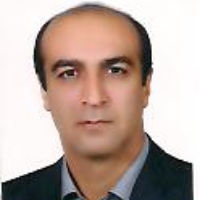Effect of Different Dormancy Breaking Treatments on Seed Germination of Salsifis (Teragopogon collinus) and Flixweed (Descurainia Sophia) as Two Weed Species
Author(s):
Abstract:
Introduction
Weeds limit crops growth, development and yield through adjacency and competing and seed dormancy is a problem in controlling of weeds. Man has been always tried to optimize crop yield through weeds controlling. Weeds seed bank in the soil can affected weed management and their control methods. So identifying seed bank characters has important role in choice of management methods in seeds of many plant species which cannot germinate despite favorable environmental conditions. Main reasons for this problem, which is termed as seed dormancy, are hard and impermeable seed coat and presence of immature or dormant embryo. To break dormancy, a variety of methods are in vogue worldwide these days. Of all different methods of breaking dormancy, treatment of seed with certain chemicals including different types of plant growth regulators (PGRs) is contemplated as the most effective one. Gibberellic acid (GA3) is the most widely used PGR to improve seed germination in different plant species. Also, nitrate (such as KNO3) clearly stimulates the germination of dormant seeds. KNO3 is the most widely used chemical for promoting germination. Solutions of KNO3 are common in routine germination testing and are recommended by the Association of Official Seed Analysts and the International Seed Testing Association (ISTA) for germination tests of many species.Stratification refers to the method of placing seeds in layers alternating with layers of a moisture retaining medium, such as sand, peat or vermiculite, and keeping them at a cool temperature for a certain period, but it varies considerably from species to species. The combination of high moisture and low temperature appears to trigger off biochemical changes which transform complex food substances into simpler forms utilized by the embryo when it renews growth at germination. The use of the word stratification has recently been extended to include all forms of cold, moist treatment whether or not the seeds are placed in layers. Chilling plays an important role in providing the stimulus required to overcome dormancy, increase germination, and produce normal seedlings for Prunuspersica. Exogenous growth regulator treatments gibberellins (usually gibberellic acid GA3 and GA4) and cytokinins (usually kinetin, benzyladenine) have been shown to break dormancy in many seed species. The objective of the present study was to investigate effective methods in breaking the seed dormancy of Teragopogon collinus and Descurarina sophia and evaluate their response to different dormancy-breaking treatments, germination under different constant and alternating temperature, and using chemical, with most appropriate dormancy-breaking procedure for both species.Materials And Methods
In order to evaluate the effect of different treatments on dormancy breaking and seed germination of Teragopogon collinus and Descurarina sophia an experiment was carried out as factorial based on a Randomized Complete Block Design (RCBD) with three replications at Shahrekord University in 2012. Treatments including different levels of gibberellic acid (0, 100, 250 and 500 mg) at two soaking time levels of 2 and 24 hour (along with scarification pre-treatment), concentrations of potassium nitrate (50, 100 and 150 mM) in 10 and 30 minutes (along with scarification pre-treatment), treatment of rotational temperature (5-15 and 10-20 °C), in full light, dark and rotational light periods (8 hr light and 16 hr dark) and mechanical treatments of dormancy breaking (application of boiling water).Results And Discussion
Teragopogon collinus and Descurainia sophia had highest seed dormancy breaking under rotational temperature and light and application of gibberellic acid and potassium nitrate (along with scarification pre-treatment) had no effect on Teragopogon collinus and Descurarina sophia dormancy. According to the Teragopogon collinus and Descurainia sophia seeds dormancy breaking in mechanical treatments and the effect of rotational temperature and light, it can be concluded that the dormancy of Teragopogon collinus and Descurainia sophia seeds are intermittent. The results showed that the effect of temperature, time, and the interaction of light ×time of germination percent of Teragopogon collinus and Descurainia sophiawere were significant at 1%.The interaction between light and alternating temperature on Teragopogon collinus seed germination suggests that intermittent lighting conditions at alternating temperatures, increase the germination percentage of Teragopogon collinus. According to the Teragopogon collinus and Descurainia sophia seeds dormancy breaking in mechanical treatments and the effect of rotational temperature and light, it can be concluded that the dormancy of Teragopogon collinusan and Descurainia sophia seeds are intermittent.Keywords:
Language:
Persian
Published:
Journal of plant protection, Volume:30 Issue: 3, 2016
Pages:
533 to 536
magiran.com/p1642620
دانلود و مطالعه متن این مقاله با یکی از روشهای زیر امکان پذیر است:
اشتراک شخصی
با عضویت و پرداخت آنلاین حق اشتراک یکساله به مبلغ 1,390,000ريال میتوانید 70 عنوان مطلب دانلود کنید!
اشتراک سازمانی
به کتابخانه دانشگاه یا محل کار خود پیشنهاد کنید تا اشتراک سازمانی این پایگاه را برای دسترسی نامحدود همه کاربران به متن مطالب تهیه نمایند!
توجه!
- حق عضویت دریافتی صرف حمایت از نشریات عضو و نگهداری، تکمیل و توسعه مگیران میشود.
- پرداخت حق اشتراک و دانلود مقالات اجازه بازنشر آن در سایر رسانههای چاپی و دیجیتال را به کاربر نمیدهد.
In order to view content subscription is required
Personal subscription
Subscribe magiran.com for 70 € euros via PayPal and download 70 articles during a year.
Organization subscription
Please contact us to subscribe your university or library for unlimited access!



